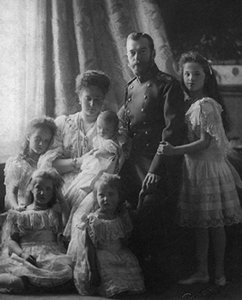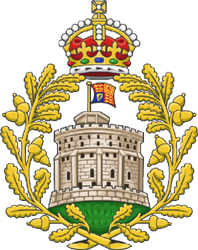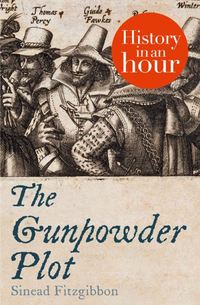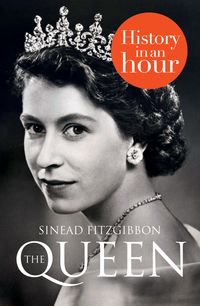
Полная версия
The Queen

Sinead Fitzgibbon
THE QUEEN

About History in an Hour
History in an Hour is a series of ebooks to help the reader learn the basic facts of a given subject area. Everything you need to know is presented in a straightforward narrative and in chronological order. No embedded links to divert your attention, nor a daunting book of 600 pages with a 35-page introduction. Just straight in, to the point, sixty minutes, done. Then, having absorbed the basics, you may feel inspired to explore further. Give yourself sixty minutes and see what you can learn. .
To find out more visit http://historyinanhour.com or follow us on twitter: http://twitter.com/historyinanhour
Introduction
Be not afraid of greatness: some are born great, some achieve greatness and some have greatness thrust upon them.Although this oft-quoted phrase from Shakespeare’s Twelfth Night was coined some 400 years ago, during the reign of the first Queen Elizabeth, its sentiment is one which exemplifies the life and reign of an altogether more modern monarch, Queen Elizabeth II.
Born into one of Europe’s longest-running dynastic monarchies, the infant Princess Elizabeth, daughter of the Duke of York, was third in line to the throne at the time of her birth. But despite occupying this rather elevated position in the royal pecking order, the probability of her ever acceding to the highest position in the land was remote to say the least – so remote, in fact, that no one seriously contemplated the possibility that such a situation would ever arise.
The line of succession was expected to pass to her father’s older brother David, the as-yet unmarried Prince of Wales, and subsequently to his future children; It would take a calamity of epic proportions to propel Elizabeth onto the throne. The young princess, it seemed, was destined to live a rather unspectacular life in relative royal obscurity, albeit with the privilege and comfort accordant with her position. But, if there is anything at all to be learned from history, it is that things rarely go according to plan.
In 1936, when Elizabeth was just ten years old, a cataclysmic event shook the British Royal Family to its very core. Quite unexpectedly, Elizabeth found herself in the centre of a maelstrom, the circumstances of which would alter the course of her life forever.
The House of Windsor
In the first twenty years of the twentieth century, the British Royal Family had undergone a period of profound change. The death of Queen Victoria in 1901, after a 63-year reign, marked the end of an era for her subjects. While her passing left many feeling bereft, others were hopeful that the accession of her son, Edward VII, to the throne would reinvigorate a monarchy which had stagnated in the latter decades of his mother’s reign.

Queen Victoria (1887)
Edward VII did prove himself willing to embrace change. In what seemed to some to be indecent haste, the new king enthusiastically set about banishing the lingering cobwebs of his mother’s long rule. In addition to ordering a dramatic refurbishment of the royal residences, he also devised a number of spectacular ceremonies, including the Trooping of the Colour, with the aim of injecting some much-needed pomp and pageantry into the monarchy.
However, Edward VII’s reign was not destined to be a long one – when he died just nine years after becoming king, the Crown passed to his son, George V. Although the serious-minded and conservative George was diametrically opposite in temperament to his more liberal-leaning father, it was during his reign that the British monarchy overcame the most difficult challenge it had faced in centuries.

Edward VII
During the First World War, when anti-German feeling was at its zenith, a wave of Republican sentiment swept through the country, threatening the monarchy’s very existence. This disaffection was borne out of the fact the British Royal Family was an offshoot of the historic German Hanoverian dynasty. To add insult to injury, Kaiser Wilhelm II was George V’s first cousin – and these close family ties with the reviled enemy rankled with a significant proportion of the British public.

George V and Queen Mary in 1914
Around this time, other hereditary European sovereigns were being deposed at an alarming rate, including another of George’s cousins, Tsar Nicholas II of Russia. A terrible fate awaited him as he, and his family, would eventually be assassinated in an orgy of revolutionary zeal in 1918. George soon realized that, in order to prevent a similar fate befalling him, something had to be done, and fast.

Tsar Nicholas II and family (1904)
Eventually, in 1917, he hit on a solution to the problem. Displaying a keen survival instinct, which would continue to be a defining characteristic of the British monarchy to this day, George set about ‘Anglicizing’ his family. The only way to disassociate himself from his German ancestry, he decided, was to shed the family surname of Saxe-Coburg-Gotha in favour of one which would be more pleasing to the British ear. After considering, and dismissing, a number of possibilities including Tudor, Stuart, Plantagenet, York and Lancaster, George and his advisors finally settled on the perfect dynastic surname for the British Royal Family – by Royal Proclamation on 17 July 1917, the House of Windsor was born.
An Uncommon Marriage
George did not stop there. Having successfully rebranded his branch of the family tree, this politically savvy king introduced yet another innovation which would further bolster his British credentials – he decided to break with tradition and allow his children to marry into British commoner (or non-Royal) families. Up to now, in order to strengthen their ties with their European neighbours, it had been the Hanoverian habit to marry their children off to scions of other Continental royal families. But now, George’s offspring were free to choose a spouse from the sons and daughters of British aristocratic clans.
One of the first members of the Royal Family to take advantage of the opportunity to introduce some ‘new blood’ into the lineage was George’s second son, Prince Albert, the Duke of York (known to all as Bertie). After a two-year courtship, during which she twice refused his proposals of marriage, Bertie finally became engaged to Lady Elizabeth Bowes-Lyon in January 1923.

Bertie and Elizabeth (1920s)
When the wedding of Lady Elizabeth (a daughter of the Scottish Earl of Strathmore) and the Duke of York took place in Westminster Abbey on 26 April of the same year, the union was welcomed by an enthusiastic British public. Crowds lined the streets to cheer the newlyweds as they emerged from the Abbey, and large numbers congregated in front of Buckingham Palace to witness the couple’s brief appearance on the balcony. Evidence indeed that the British public’s love affair with their Royal Family had been rekindled.
As far as George V was concerned, it was mission accomplished.
The Birth of a Princess
After their high-profile nuptials, Bertie and Elizabeth would undoubtedly have preferred a peaceful start to their married life. But their royal status meant that, during the first few years at least, they were kept busy with a number of official visits abroad, no doubt calculated to capitalize on their popularity.
Then, after two years spent devoting themselves to their royal duties, the Duchess of York was delighted to discover, in the summer of 1925, that she was pregnant with the couple’s first child. Although the pregnancy was relatively uneventful, the birth proved to be difficult. Complications arose during the labour, which had begun a few days prematurely. To the relief of all concerned, the Duchess was finally delivered of a healthy daughter at 2.40 a.m. on 21 April 1926, at the couple’s home at 17 Bruton Street, Mayfair. The newspapers of the time stated, somewhat mysteriously, that the Duchess was obliged to undergo ‘a certain line of treatment’, thought to be a euphemism for the procedure now known as a Caesarian section.
When news of the safe arrival of their first granddaughter reached Buckingham Palace by telegram a little while later, King George V and his wife, Queen Mary, were overjoyed. They visited the newest addition to their family the following day, and the Queen wrote in her diary: ‘Such a relief and joy. Saw the baby who was a little darling with a lovely complexion and pretty fair hair.’ The child’s christening took place the following month, on 29 May, at Buckingham Palace, using water from the River Jordan. As is royal custom, the young Princess was given names from previous generations of her illustrious family – she was christened Elizabeth Alexandra Mary after her mother, great-grandmother and grandmother respectively.
The ceremony was a grand occasion, and despite having died twenty-five years previously, Queen Victoria’s imposing shadow loomed large over the event. The gold baptismal font, which had been used to christen of all Victoria’s children, was conveyed from Windsor Castle for the occasion, while the child’s christening gown was another relic from a bygone era, having been originally used for Queen Victoria’s first daughter. Interestingly, for a woman who would soon learn never to show her feelings in public, Princess Elizabeth’s incessant wailing throughout the ceremony left her parents in no doubt that she was immensely unimpressed with the whole affair.
An Idyllic Childhood
When the young Princess was just eight months old, her parents were obliged to leave her behind in England when they embarked on another tour, this time of Australia. The enforced six-month separation, however, proved to be more difficult for her mother than for the infant herself, with the Duchess recalling later that parting from her beloved daughter ‘quite broke me up’.

Portrait of Princess Elizabeth, aged three (1929)
In her parent’s absence, the responsibility for Princess Elizabeth’s care mainly fell to her nanny, Clara Knight, who had also looked after the Duchess as a child. Known as ‘Alah’ to her young charges, this indomitable, no-nonsense woman was to have a profound influence on the young Elizabeth, who would continue to remember her fondly long into adulthood. The little Princess, however, was not completely without familial influence during those formative months when her parents were away. In addition to frequent visits to her maternal grandparents, she was also taken to see King George and Queen Mary every afternoon. In fact, when the Duke and Duchess of York finally returned from their arduous trip in June 1927, they were delighted to discover that their fifteen-month-old daughter had become the darling of Buckingham Palace.
It was not just her grandparents who were charmed by the child – it seemed Elizabeth, or Lilibet as she would become known (a nickname which stemmed from her inability to pronounce her name correctly), charmed almost everyone who encountered her. Even the inscrutable Winston Churchill was not immune. After seeing the child at Balmoral in 1928, the then Chancellor of the Exchequer wrote to his wife: ‘[She] is quite a character. She had an air of authority and reflectiveness astonishing in an infant.’

Princess Elizabeth and Princess Margaret Rose (1932)
But Lilibet did not remain the centre of attention for long. When, on 21 August 1930, her sister, Margaret Rose, was born, the new arrival wasted no time in making her presence felt. With the baby monopolizing all of Alah’s time, Lilibet’s care was delegated to a nursery assistant, Margaret McDonald, whom the Princess immediately nicknamed ‘Bobo’. And while she was to grow very fond of Bobo, the loss of her beloved Alah must have been very keenly felt by the four-year-old child. It soon became clear that Margaret Rose was very different in temperament to her older sibling. More headstrong and unruly, she was much naughtier than Lilibet, and was forever getting into scrapes, which would prompt the exasperated Alah to exclaim, ‘I really don’t know what we are going to do with Margaret!’ But no one could ever stay mad at her for long – she possessed an enviable ability to make people laugh, with the result that any naughtiness was soon forgotten.
However, despite the marked differences in their personalities, the sisters grew very close. Aside from the usual nursery arguments, during which Lilibet would often bitterly complain that ‘Margaret always wants what I want!’, the girls played well together. Indeed, it seems they had no choice but to get along – being educated at home by their governess Marion Crawford, or ‘Crawfie’, the princesses spent every day in each other’s company, with almost no outside influences to distract them.
Unfortunately, their peaceful existence did not last long. When Princess Elizabeth was just ten years old, her father’s older brother dropped a bombshell that would shatter the family’s idyll forever.
The Death of ‘Grandpa England’
The final weeks of 1935 had not been a happy period for the British Royal Family. From mid November, it had become obvious that George V’s health was in serious decline, to the extent that when the King’s physician released a notice to the Press on the evening of 20 January 1936, stating that ‘the King’s life is drawing peacefully to a close’, no one was much surprised. The doctor’s predictions proved to be correct. At 11.55 p.m. on the same evening, King George V, whom Princess Elizabeth had lovingly dubbed ‘Grandpa England’, breathed his last. He was succeeded by his eldest son, David, the erstwhile Prince of Wales, who chose to take the regnal name of King Edward VIII.

Prince of Wales, later Edward VIII (1919)
However, contrary to his doctor’s communiqué, George V’s passing was anything but peaceful. In his final years, the ailing King had been increasingly troubled by doubts regarding David’s suitability to take on the highest position in the land – and his misgivings were far from unfounded. As Prince of Wales, David had lived the life of a pleasure-seeking playboy prince. Weak-willed, petulant, yet endlessly charming, David was bored senseless by royal protocol and showed little interest in affairs of State, preferring instead to absorb himself in a number of adulterous liaisons with married women.
When George V voiced his concerns to the then Prime Minister, Stanley Baldwin, saying, ‘After I’m dead, the boy will ruin himself in a year,’ even he could not have known how prophetic his words would prove to be. In the event, it would take just eleven months for George’s wayward son to bring about his own spectacular fall from grace.
Abdication: The Year of the Three Kings
The instrument of Edward VIII’s downfall lay in the rather unlikely guise of an American woman named Wallis Simpson, who was already on her second marriage, the first having ended in divorce.

Wallis Simpson (1936)
When Mrs Simpson first appeared on the scene in 1932, her subsequent affair with the Prince of Wales initially caused little concern. However, much to the chagrin of his family and advisors, it gradually became clear that the charismatic American was not just another of David’s inconsequential dalliances. But in fact, by 1935, he had become so fond of Mrs Simpson that his affection for her bordered on obsession, one that showed no signs of abating even after he became King. Indeed, in the words of Winston Churchill, ‘[She was] as necessary to his happiness as the air he breathed’. As such, by mid-1936, he became fixated on a plan to make Wallis – who was by now about to divorce her second husband – his wife.
Therein lay the problem. As Supreme Governor of the Church of England, an institution which frowned upon divorce, such a course of action was a constitutional impossibility for the King. Ignoring the counsel of his advisors, Edward doggedly insisted on marrying Mrs Simpson, and in doing so, he plunged the country into a constitutional crisis.

King George VI
In a number of secret meetings, Edward and his Cabinet ministers earnestly tried to come up with a solution to the problem of Mrs Simpson. The ins and outs of the issue were endlessly debated, without success. At one stage, it seemed likely that he would be allowed to enter a morganatic marriage (one which conferred no royal status on his wife). But in the end, this too was rejected by the Government, who believed that the British public would be hostile to any such arrangement. Utterly dejected, Edward was forced to choose between his duty to his country and the love of his life – and, perhaps unsurprisingly, he chose the latter. On 10 December 1936, the King signed the Instrument of Abdication, ending his all too brief reign.
Consequently, when Princess Elizabeth awoke the following day, her world had changed beyond all recognition. The Crown had passed to her father, who was now King George VI, which meant her mother was Queen Consort and Elizabeth herself was the heiress presumptive. The only thing that would now prevent her from ascending to the throne would be an early death or, thanks to the existence of the concept known as male primogeniture (which gives precedence to a king’s sons), the arrival of a male sibling. In words attributed to her maternal grandmother, Lady Strathmore, it was at this stage in the proceedings that Princess Elizabeth allegedly ‘began praying ardently for a brother’.
A Change of Address
Naturally, this sudden transformation in the family’s circumstances necessitated a whole host of changes, not least of which was a rather hurried relocation to Buckingham Palace.
Up till now, the family, having moved from Bruton Street many years earlier, had lived in a rather imposing residence at 145 Piccadilly, which had a magnificent view across Green Park. However impressive its appointments, Princess Elizabeth’s childhood home paled into insignificance when compared to the ostentatious grandeur of the Palace. Nonetheless, both Elizabeth and Margaret were rather unenthusiastic at the prospect of moving to the residence which they had, until recently, always thought of as the home of their grandparents. In her book, The Little Princesses, the children’s governess, Crawfie, recounted Elizabeth’s reaction on hearing of their impending move:
When I broke the news to Margaret and Lilibet that they were going to live in Buckingham Palace, they looked at me in horror. ‘What!’ Lilibet said. ‘You mean forever?’
Their reticence was perhaps understandable. Having frequently visited their grandparents there, the girls were only too aware that, in stark contrast to the magnificence of the State Apartments, the upper floors of Buckingham Palace, with their paucity of bathrooms and their badly heated, mice-infested bedrooms, were in dire need of modernization.

Buckingham Palace, photograph by David Iliff, (CC-BY-SA 3.0)
However, the sisters had little choice but to make the most of the situation, and they soon discovered there were advantages to living in such an environment. The seemingly endless warren of gloomy passageways, through which the sisters were allowed to run virtually unimpeded, were a child’s paradise, while the Palace’s innumerable nooks and crannies provided bountiful opportunities for games of hide and seek.
Another benefit of living at Buckingham Palace was the vast gardens, and both Elizabeth and Margaret spent many happy hours exploring the grounds. One of their favourite features was ‘the hill’, a large mound of earth which rose above the Palace walls, allowing the girls to get a glimpse of the outside world. Indeed, years later Elizabeth would admit to her portrait painter, Pietro Annigoni, that she spent many hours watching all the cars and activity in the Mall, and often wondered what life was like beyond the confines of the Palace walls.
And so it seems, for all the advantages and privileges afforded to her, the young Elizabeth could not escape the fact that she was, in effect, a princess trapped in her ivory tower.
The Coronation of George VI
If the family were hoping for a little time to come to terms with their greatly altered circumstances, they were to be sorely disappointed. No sooner had Elizabeth’s father been proclaimed King than all thoughts turned to the impending coronation.
The previous year it had been decided that Edward VIII’s coronation would take place on 12 May 1937. By the time of his abdication, plans for the ceremony were so far advanced that it was thought wasteful to abandon them, and so the new King agreed to take over the slot originally intended for his brother. However, while this was undoubtedly a thoroughly sensible decision, it left precious little time for George and his family to ready themselves for the big day. Their parents threw themselves into the preparations, which, for George, included lengthy sessions with the maverick Australian speech therapist, Lionel Logue, in a bid to overcome a debilitating stutter that had plagued him since childhood. Meanwhile, Elizabeth and her sister were subjected to an intensive course of tutoring on the significance of the event by their grandmother, Queen Mary.

Stamp Commemorating the Coronation of George VI
It seems, for Elizabeth at least, these lessons paid off. So impressed was she by the magnitude of the occasion, she took it upon herself to record the day’s events for posterity. In the document – which was dedicated to her parents with the words ‘To Mummy and Papa, In Memory of Their Coronation, From Lilibet. By Herself.’ – she displays a keen eye for detail and a remarkable perceptiveness for a girl of her age. She wrote: ‘At 5 o’clock in the morning, I was woken up by the band of the Royal Marines striking up just outside my window. I leapt out of bed and so did Bobo. We put on dressing-gowns and shoes. . and we crouched in the window looking on to a cold and misty morning.’
After a hurried breakfast, both Elizabeth and Margaret donned identical dresses of ‘white silk with old cream lace’ and ‘robes of purple velvet with gold on the edge’. Following a ‘jolty’ ride to Westminster Abbey in a horse-drawn carriage, the sisters took their place alongside their grandmother in the Royal Box. ‘I thought it all very, very wonderful. . the arches and beams at the top were covered with a sort of haze of wonder as Papa was crowned, at least I thought so.’

Badge of the House of Windsor during George VI’s Reign
However, as the two-and-a-half hour ceremony dragged on, Elizabeth’s attention began to wane: ‘At the end the service got rather boring, as it was all prayers. Grannie and I were looking to see how many more pages to the end, and we turned one more and then I pointed to the word at the bottom of the page and it said “Finis”. We both smiled at each other and turned back to the service.’
Although she was most likely unaware of it at the time, her father’s coronation was to prove to be an excellent training ground for the young Princess – in just fifteen short years, she would find herself following reverently in his footsteps, as she made her way into the Abbey to be crowned Queen Elizabeth II.









